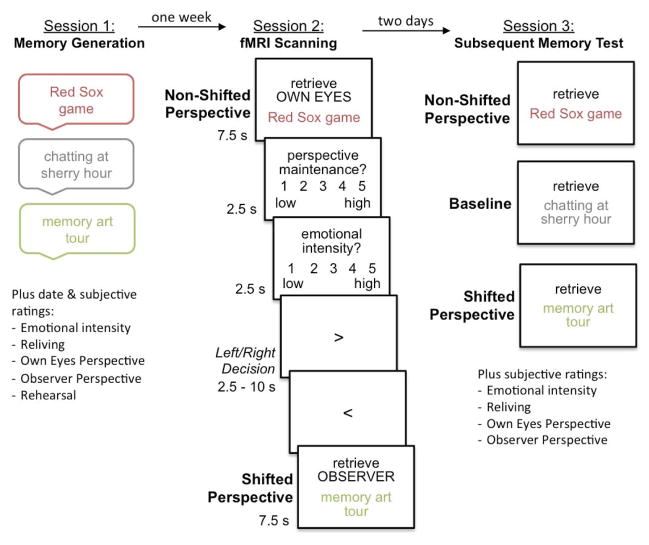Figure 1.
Experimental design. During session 1 participants generated specific autobiographical memories from the past 5 years and rated the degree of own eyes and observer perspective on 7-point scales from 1 = low to 7 = high. Only memories associated with a strong own eyes perspective (i.e., >= 5 on the own eyes rating, and < 4 on the observer rating) were included in session 2 and 3. One week later during session 2 participants were asked to retrieve some of these memories from either an own eyes or an observer perspective while undergoing fMRI scanning. In the non-shifted perspective condition the strong own eyes memories were retrieved again from the same own eyes perspective, whereas in the shifted perspective condition memories were retrieved from the alternative observer perspective. Participants then rated the ability to maintain the indicated perspective and the emotional intensity associated with retrieval. Two days after scanning in session 3 participants were asked to retrieve all the memories again, including memories in a baseline condition without additional retrieval experience during scanning, and to rate the visual perspective associated with retrieval.

